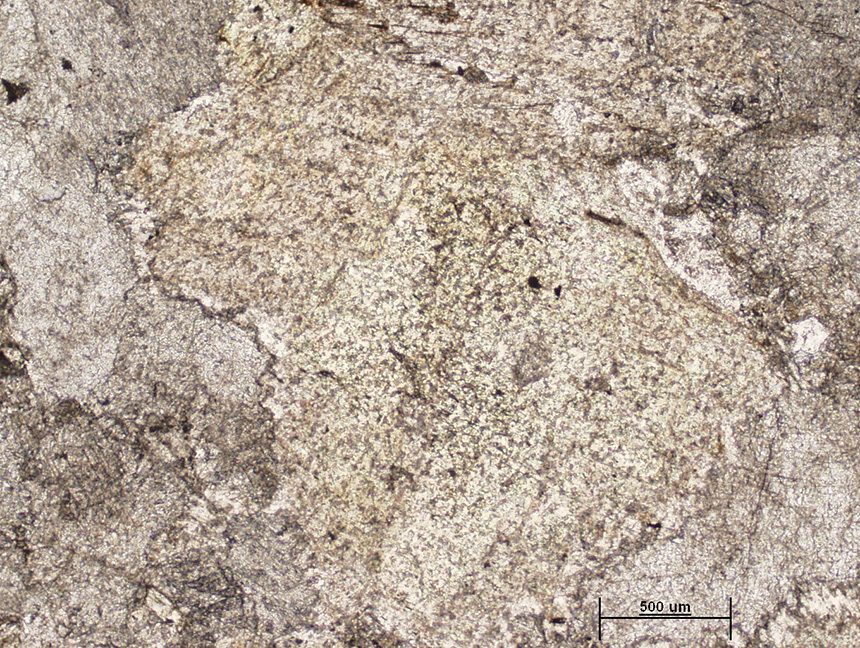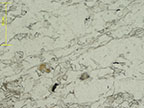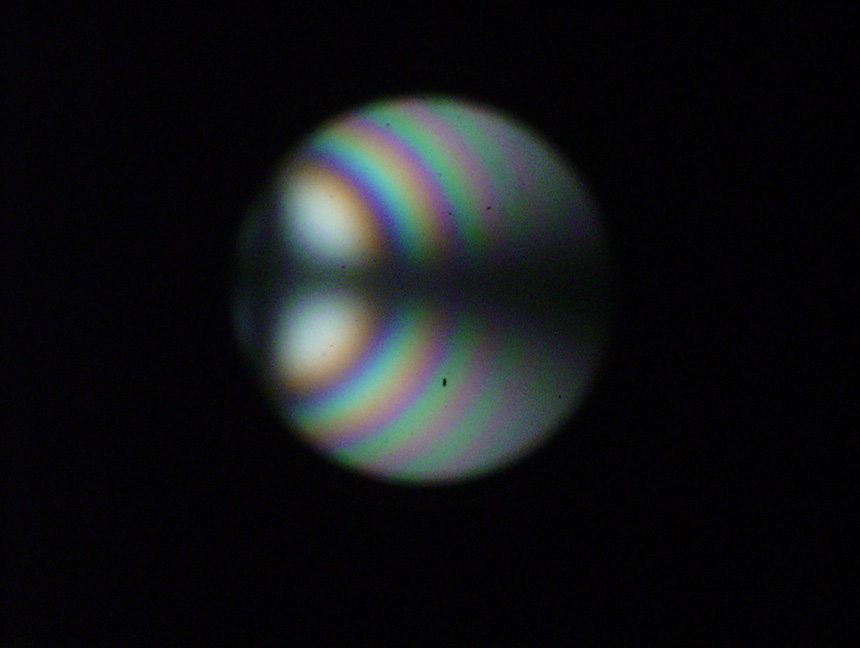 |
Photomicrograph in crossed polarized light of polycrystalline talc replacing dolomite. The talc appears to be replacing dolomite along fractures as well as along its edges. The talc close to the dolomite tends to be more fine-grained. This sample is from the Sweetwater View Mine, Ruby Range, SW Montana. |
 |
Thin section of massive fine-grained talc replacing coarse dolomite in crossed polarized light. The talc is brightly colored (1st to 2nd order colors). The dolomite appears in the washed-out beige characteristic of the high birefringence of carbonates. (Field of view is 5 mm.) |
 |
Petrographic image of talc showing the variation of color in plain-polarized light verses cross-polarized light. The talc is pastel-colored in cross-polarized light, mainly 2rd order colors due to a maximum birefringence of 0.050. This image is also from a massive talc deposit in SW Montana. |
 |
Photomicrograph of talc in cross-polarized and plane polarized light. The talc has golden, second order colors and is lenticular in shape. It is surrounded by quartz and calcite. This photomicrograph was taken from slide 46-6A, a low-grade marble from Vermont. (Click for roll over image.) |
 |
Image of off-centered bxa figure for talc; Click on the image to see a rollover image that shows insertion of the quartz plate. This image shows that talc is biaxial negative as the colors nearest the NE isogyre (concave up to the NE) changes to yellow, resulting from a subtraction of interference colors. Conversely the colors closest the SW facing isogyre turn blue, similarly showing the mineral is biaxial negative. |
| WWW Images |
Union College [under amphiboles] |